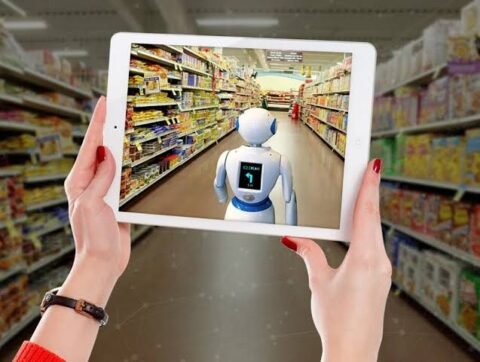The rapid evolution of artificial intelligence (AI) is reshaping how we communicate, interact, and solve problems. Among the most impactful advancements is the development of AI chatbots, which have transformed the way businesses and individuals engage in digital spaces. But as these chatbots become more sophisticated, they also bring with them challenges and opportunities. This article explores the essential functions of AI chatbots, their impact on human interaction, the challenges they pose, and the promising opportunities they offer for the future.
What Are AI Chatbots?
AI chatbots are computer programs designed to simulate human-like conversations through text or voice. Powered by natural language processing (NLP) and machine learning algorithms, these bots can understand, interpret, and respond to user queries in a way that mimics human interaction. From general customer support to more niche applications, like NSFW character AI, chatbots are becoming versatile tools across different industries. As they evolve, chatbots are not just responding to pre-defined scripts but are learning from interactions, continuously improving their accuracy and relevance.
Key Functions of AI Chatbots
AI chatbots are built to serve multiple roles across various industries. Their core functions allow businesses to streamline communication, enhance customer service, and improve operational efficiency.
1. Customer Support Assistance
AI chatbots act as the first line of communication in customer service, providing immediate assistance.
- Answering frequently asked questions
- Redirecting complex queries to human agents
- Reducing response time and operational costs
2. Task Automation
One of the major roles of AI chatbots is automating repetitive tasks, freeing up human resources for more complex work.
- Scheduling appointments
- Processing orders and payments
- Managing basic technical support requests
3. Personalized Recommendations
Advanced AI chatbots are capable of analyzing user data to provide personalized recommendations.
- Offering tailored product or service suggestions
- Providing personalized content based on user behavior
- Enhancing the user experience by predicting preferences
4. Lead Generation and Qualification
In sales, AI chatbots serve as virtual assistants to engage with potential customers and qualify leads.
- Gathering information from potential customers
- Identifying qualified leads based on their responses
- Scheduling follow-up actions for human sales teams
How Do AI Chatbots Impact Human Interaction?
As AI chatbots become more integrated into our daily lives, they influence the way we interact with technology and, by extension, with one another. Whether it’s a casual customer inquiry or more intimate interactions like NSFW AI CHAT, the rise of these bots raises important questions about the future of human relationships and communication. These interactions are evolving rapidly, and as they do, so too must our understanding of their potential impacts on human society.
1. Enhancing Efficiency in Communication
AI chatbots enable faster and more efficient communication. Instead of waiting in long queues for support, users can get immediate responses to their questions. This speed not only satisfies customers but also allows businesses to handle a higher volume of inquiries without overwhelming their staff. However, as efficiency improves, there is a risk that human-to-human interactions may decline in quality and frequency, leaving users feeling disconnected from genuine human engagement.
2. Balancing Automation and Personal Touch
While AI chatbots excel at handling routine tasks and basic queries, they lack the emotional intelligence and empathy that human agents can provide. This creates a delicate balance for businesses between automating interactions to save time and ensuring customers feel heard and understood. As chatbots continue to develop, incorporating more human-like qualities, the gap between automated and human responses may begin to narrow.
3. Shaping Future Communication Norms
The widespread adoption of AI chatbots is likely to shape future communication norms. People may become more accustomed to interacting with machines, adjusting their communication styles to suit bot interactions. This shift could lead to a more transactional style of communication, where efficiency is prioritized over depth and nuance, potentially impacting human relationships in broader societal contexts.
What Are the Potential Challenges Facing AI Chatbots?
Despite their benefits, AI chatbots face several challenges that could hinder their long-term success and effectiveness.
- Limited Understanding of Complex Queries: While AI chatbots are improving, they often struggle with interpreting complex or ambiguous user queries, leading to frustration.
- Lack of Emotional Intelligence: AI chatbots lack the ability to understand and respond to emotional cues, which can lead to unsatisfactory customer experiences in sensitive situations.
- Data Privacy Concerns: Chatbots collect and process vast amounts of personal data, raising concerns over data security and user privacy.
- Over-reliance on Automation: As businesses adopt chatbots, there is a risk of over-relying on them and reducing human interaction, which could alienate customers who prefer a personal touch.
- Cultural and Language Barriers: Although AI is becoming more multilingual, many chatbots still struggle with understanding and properly responding to cultural and linguistic nuances.
What Opportunities Do AI Chatbots Offer for Businesses?
In spite of the challenges, AI chatbots present several key opportunities that businesses can leverage for growth and innovation. While their mainstream use lies in customer support, other sectors, including niche applications like NSFW AI, have started using AI chatbots to engage users in more personalized experiences. From automating tasks to offering 24/7 availability, chatbots provide businesses with an efficient way to scale their operations.
- Cost Reduction: Automating customer service and routine tasks helps businesses reduce the costs associated with maintaining large support teams.
- 24/7 Availability: AI chatbots offer around-the-clock service, enhancing customer satisfaction and engagement outside normal business hours.
- Scalability: AI chatbots enable businesses to manage increased demand without needing to hire additional staff, especially during peak periods.
- Data Collection and Insights: Chatbots can gather valuable customer data, providing businesses with insights into customer preferences, behaviors, and pain points, which can inform decision-making.
- Enhanced Customer Engagement: Through personalized recommendations and timely responses, chatbots can improve the overall customer experience, fostering long-term loyalty.
Future Development of AI Chatbots
The future of AI chatbots promises even more advanced capabilities, driven by the rapid progress in machine learning, NLP, and AI ethics. As technology continues to evolve, we can expect chatbots to become even more intuitive, adaptive, and emotionally intelligent, helping to bridge the gap between human interaction and automation. Furthermore, advancements in AI ethics will ensure that privacy and data protection concerns are addressed, fostering greater trust in chatbot usage across various industries. In the coming years, AI chatbots are likely to be integral to every sector, from healthcare to education, offering more personalized and human-centric experiences.
Conclusion
AI chatbots are an indispensable part of the digital landscape, transforming the way we interact, communicate, and conduct business. While there are undeniable challenges associated with their development—such as data privacy concerns and the lack of emotional intelligence—the opportunities they provide for improving efficiency, reducing costs, and enhancing customer experience are vast. As we move into the future, AI chatbots will not only become more sophisticated but also more integral to the fabric of human interaction, creating a dynamic interplay between technology and humanity.
Passionate content writer and savvy blog publisher, Aamir crafts compelling stories and insightful articles that captivate and inform. With a knack for blending creativity and strategy, they bring fresh perspectives to every piece. Dive into their world of words and discover content that resonates.





